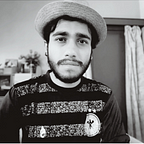Alfred Hitchcock’s VERTIGO — Scene Uncanny Resemblance, An Analysis
VERTIGO is an American Psychological thriller directed by Alfred Hitchcock and is considered one of his most complex works ever. When it was released in 1958, Vertigo received a lot of mixed reviews, film experts reckoned that it might be due to the timing of the release of the film. In that era, the dominance of big studios was more prevalent than the directors. But Hitchcock at that time was like a breath of fresh air, who along with his cast and crew managed to create magic on screen time and time again.
Vertigo, as a film, has been an inspiration later for so many movies and in filmmaking. One of its key elements was how Hitchcock composed each sequence in the film, how he used James Stewart and Kim Novak to tell a story which according to him was his most personal work. In this analysis, we are focusing on a small clip known as “Uncanny Resemblance”.
This might come as a spoiler, but this scene “Uncanny Resemblance” takes place in the middle of the film, where Scotty who is a retired detective who also has severe Vertigo, receives a request from, his college friend Gavin to tail his wife Madeleine and keep an eye on her as Gavin suspects that Madeleine has been possessed by something. As Scotty starts following Madeleine through the city of San Francisco, this scene takes place in between.
The scene begins with the establishing shot of the Legion of Honour Museum in San Francisco with Madeleine’s green car parked in the background as in those days one can straight up to the gates of the museum. Viewers can figure out that Madeleine has come to visit the museum just by car, as the color green has been used by Hitchcock in the film to represent Madeleine. It was shot in Vistavision film technique, where the format is kept at 35 mm, but it is done horizontally which in turn makes each frame bigger than standard 35 mm and helps to compose the story.
Next, we see Scotty entering the museum with no one to be seen around anywhere which also resembles how character Scotty is in the film, he is a man lost in his world and with no background score in this shot, the sound of Scotty’s boots as he walks up adds to the mystery in the environment as the shot fades onto the next.
The next shot begins with Bernard Herrmann’s brilliant music score as Scotty enters the museum and stands at the entrance in a dimly lit corridor, but his focus goes straight to Madeleine who is sitting in a brightly lit museum room. This is how Hitchcock uses lightning and set design brilliantly to create separation and, in a way, to summarize what has been happening so far in the film, that is Scotty observing Madeleine from far away, as in this shot, we see Scotty standing in the shadows looking at Madeleine.
Next, we see a tracking shot of Scotty making his way inside the museum looking and appreciating the works inside the museum including “Portrait of a Gentleman” and “Portrait of Architecture” and turns towards Madeleine taking interest in her, captured in a medium close up shot.
In the next shot Hitchcock uses point of view to show the audience exactly what Scotty sees, this in a way makes the viewers relate to the character. From Scotty’s view, we can see Madeleine sitting on a bench looking up towards the portrait of Carlotta, captured in a full shot.
Then it goes back to the medium close-up shot of Scotty to make the audience aware of the space they and the characters are in as he starts observing Madeleine closely.
Next, we see a close-up shot of a flower bouquet containing white and pink flowers, followed by a Swish tilt shot towards the Portrait of Carlotta showing the same bouquet with the same color in the hands of Carlotta.
Nowadays films let audiences figure out the differences with a long shot of longer duration but Hitchcock along with Saul Bass who worked as a visual consultant in this movie uses close-ups to add to the significance of the items and there is also no cut between the bouquet in real life to the follow-up shot of the bouquet of Carlotta, this is done to ensure the connection between the characters remains intact in the minds of audiences, helped by the close-ups.
The same shots are followed to observe the curled hair of Madeleine, which is also the same as Carlotta, also the close-up to the Portrait of Carlotta gives the audience an image of how Madeleine wants to look like as so far in this scene we have only seen her from the backside and not her face.
The next shot was captured in medium shot, concluding his observation Scotty leaves the room with more questions in his mind, as he calls up the caretaker of the museum and inquiries about the Portrait, from there he comes to know about Carlotta and receives a catalog about Carlotta to investigate more into the matter. The shot takes place with Madeleine & the Portrait in the background as a main subject of attraction, together with Herrmann’s unsettling and mysterious music score as Scotty takes a final glance at Madeleine before leaving.
In the ’60s, during the release of VERTIGO, times were changing, and people were becoming more appreciative of other genres. The focus was shifting from the romantic era to an era more bold, ambitious, and adventurous which later came to be known as the American New Wave and Alfred Hitchcock’s VERTIGO was probably the film that forged the path to that.
— — — — — — — — — — — — — — — — — — — — — — — — — — — — — — — —
